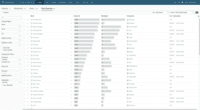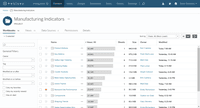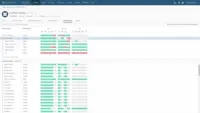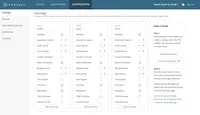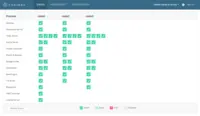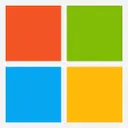Overview
What is Tableau Server?
Tableau Server allows Tableau Desktop users to publish dashboards to a central server to be shared across their organizations. The product is designed to facilitate collaboration across the organization. It can be deployed on a server in the data center,…
An experienced general review for Tableau Server
The WORST company to do business with
Data Analytics with Tableau
Laddy's Tableau Server Review
Pretty. Unstable product + poor support = operations nightmare.
Tableau Server is a world class product
Tableau - Great Visualization at ease
Tableau to the rescue
Tableau - Good Viz, Poor Admin
Failed to meet expectations
Great product but not Cheap
Reviewing Tableau Server
Tableau server is used across multiple departments, with the bulk users in our reporting and finance department.
It allows end users to see …
Tableau Server Review
Tableau Server for Sharing and collaboration of Dasboards
Tableau Server is a great tool for small, medium, and large companies
Awards
Products that are considered exceptional by their customers based on a variety of criteria win TrustRadius awards. Learn more about the types of TrustRadius awards to make the best purchase decision. More about TrustRadius Awards
Popular Features
- Customizable dashboards (94)9.494%
- Drill-down analysis (95)8.787%
- Formatting capabilities (93)8.585%
- Multi-User Support (named login) (93)7.575%
Pricing
Viewer
$12.00
Explorer
$35.00
Creator
$70.00
Entry-level set up fee?
- No setup fee
Offerings
- Free Trial
- Free/Freemium Version
- Premium Consulting/Integration Services
Product Demos
Tableau Server | How to Restore a Backup
Tableau Server | How to Backup Server
How Tableau Works | Tableau Tutorial for Beginners | Tableau Server Online Training | Intellipaat
Installing Tableau Server 10.5 on Linux
Features
BI Standard Reporting
Standard reporting means pre-built or canned reports available to users without having to create them.
- 9.1Pixel Perfect reports(29) Ratings
Pixel Perfect reports are highly-formatted reports with graphics and ability to preview the report before printing.
- 9.4Customizable dashboards(94) Ratings
Customizable dashboards are dashboards providing the builder some degree of control over the look and feel and display options.
- 9.3Report Formatting Templates(81) Ratings
Ad-hoc Reporting
Ad-Hoc Reports are reports built by the user to meet highly specific requirements.
- 8.7Drill-down analysis(95) Ratings
Drill down analysis is the ability to get to a further level of detail by going deeper into the hierarchy.
- 8.5Formatting capabilities(93) Ratings
Ability to format output e.g. conditional formatting, lines, headers, footers.
- 8.9Integration with R or other statistical packages(59) Ratings
Integration with the open-source R predictive modeling environment.
- 9.5Report sharing and collaboration(89) Ratings
Report sharing and collaboration is the ability to easily share reports with others.
Report Output and Scheduling
Ability to schedule and manager report output.
- 9.6Publish to Web(85) Ratings
- 9.3Publish to PDF(84) Ratings
- 8.2Report Versioning(70) Ratings
Report versioning is the assignment of version numbers to each version of a report to help in tracking.
- 7.6Report Delivery Scheduling(77) Ratings
Report Delivery Schedule is the ability to have reports delivered to a destination at a specific data and time.
- 5.1Delivery to Remote Servers(9) Ratings
Ability to deliver reports to remote servers
Data Discovery and Visualization
Data Discovery and Visualization is the analysis of multiple data sources in a search for patterns and outliers and the ability to represent the data visually.
- 8.8Pre-built visualization formats (heatmaps, scatter plots etc.)(86) Ratings
Pre-built visualization formats are canned visualization types that can be selected to visualize different kinds of data.
- 8.8Location Analytics / Geographic Visualization(85) Ratings
Location analytics is the visualization of geographical or spatial data.
- 7.8Predictive Analytics(64) Ratings
Predictive Analytics is the ability to build forecasting models based on existing data sets.
Access Control and Security
Access control means being able to determine who has access to which data.
- 7.5Multi-User Support (named login)(93) Ratings
Named model access means that users have access based on name and password.
- 7.5Role-Based Security Model(90) Ratings
Role-based access means that access to data is determined by job or position in the corporation.
- 7.5Multiple Access Permission Levels (Create, Read, Delete)(92) Ratings
Multiple access permission levels means that different levels of users have different rights.
- 7.5Single Sign-On (SSO)(62) Ratings
Allows users to use one set of login credentials to access multiple applications
Mobile Capabilities
Support for mobile devices like smartphones and tablets.
- 7.3Responsive Design for Web Access(77) Ratings
Web design aimed at producing easy-to-read sites across a range of different devices.
- 7.2Mobile Application(61) Ratings
A dedicated app for iOS and/or Android.
- 8Dashboard / Report / Visualization Interactivity on Mobile(68) Ratings
In-app dashboard reports and data visualization.
Application Program Interfaces (APIs) / Embedding
APIs are a set of routines, protocols, and tools for used for embedding one application in another
- 9REST API(40) Ratings
REST is an architecture style for designing networked applications
- 9.1Javascript API(37) Ratings
A Javascript API is a type of API
- 9.1iFrames(40) Ratings
An iFrame is an HTML document embedded inside another HTML document on a website
- 5.5Java API(7) Ratings
A Java application programming interface (API) is a list of all classes that are part of the Java development kit (JDK)
- 6.1Themeable User Interface (UI)(9) Ratings
A themeable user interface means that a specific visual them can be applied to it
- 4.6Customizable Platform (Open Source)(7) Ratings
A customizable, open source API Gateway is a fast and scalable type of API
Product Details
- About
- Integrations
- Competitors
- Tech Details
- Downloadables
- FAQs
What is Tableau Server?
Tableau Server is an enterprise self-service analytics platform that supports data-driven decision making throughout the user's organization.
Customers can deploy the way that makes the most sense for their organization - on-premises or in the cloud, on Windows or Linux, while integrating with their existing security and authentication protocols. Customers can provide governed data access while promoting sharing and collaboration with data, dashboards and insights. It includes automated processes and workflows, and users can define access for individual users and groups.
Tableau Server Features
BI Platform Features
- Supported: Administration via Windows App
- Supported: Administration via MacOS App
- Supported: Administration via Web Interface
- Supported: Live Connection to External Data
- Supported: Snapshot of External Data
- Supported: In-memory data model
- Supported: Multi-Data Source Reporting (Blending)
Supported Data Sources Features
- Supported: MS Excel Workbooks
- Supported: Text Files (CSV, etc)
- Supported: Oracle
- Supported: MS SQL Server
- Supported: IBM DB2
- Supported: Postgres
- Supported: MySQL
- Supported: ODBC
- Supported: Cloudera Hadoop
- Supported: Hortonworks Hadoop
- Supported: EMC Greenplum
- Supported: IBM Netezza
- Supported: HP Vertica
- Supported: SAP Hana
- Supported: Teradata
- Supported: Salesforce
- Supported: SAP
- Supported: Google Analytics
BI Standard Reporting Features
- Supported: Customizable dashboards
- Supported: Report Formatting Templates
Ad-hoc Reporting Features
- Supported: Drill-down analysis
- Supported: Formatting capabilities
- Supported: Predictive modeling
- Supported: Integration with R or other statistical packages
- Supported: Report sharing and collaboration
Report Output and Scheduling Features
- Supported: Publish to Web
- Supported: Publish to PDF
- Supported: Output Raw Supporting Data
- Supported: Report Versioning
- Supported: Report Delivery Scheduling
Data Discovery and Visualization Features
- Supported: Pre-built visualization formats (heatmaps, scatter plots etc.)
- Supported: Location Analytics / Geographic Visualization
- Supported: Predictive Analytics
- Supported: Support for Machine Learning models
- Supported: Pattern Recognition and Data Mining
- Supported: Integration with R or other statistical packages
Access Control and Security Features
- Supported: Multi-User Support (named login)
- Supported: Role-Based Security Model
- Supported: Multiple Access Permission Levels (Create, Read, Delete)
- Supported: Report-Level Access Control
- Supported: Single Sign-On (SSO)
Mobile Capabilities Features
- Supported: Responsive Design for Web Access
- Supported: Mobile Application
- Supported: Dashboard / Report / Visualization Interactivity on Mobile
Application Program Interfaces (APIs) / Embedding Features
- Supported: REST API
- Supported: Javascript API
- Supported: iFrames
Tableau Server Screenshots
Tableau Server Integrations
Tableau Server Competitors
Tableau Server Technical Details
| Deployment Types | On-premise, Software as a Service (SaaS), Cloud, or Web-Based |
|---|---|
| Operating Systems | Windows, Linux |
| Mobile Application | Apple iOS, Android, Mobile Web |
| Supported Countries | Worldwide |
| Supported Languages | English, French, German, Spanish, Brazilian Portuguese, Japanese, Korean, Chinese |
Tableau Server Downloadables
Frequently Asked Questions
Comparisons
Compare with
Reviews and Ratings
(870)Community Insights
- Business Problems Solved
- Recommendations
Tableau Server has become an essential tool for organizations across various industries, offering a wide range of use cases that have proven valuable to users. Its ability to transform complex data into user-friendly visualizations has been particularly beneficial in emergency preparedness analytics within the healthcare sector. Additionally, dedicated analysts have utilized Tableau Server to create and deploy dashboards that are accessible to all employees, serving as the main repository for reporting needs. This versatility extends beyond healthcare, with organizations from IT to Human Resources leveraging the platform to address key issues such as device availability, performance tracking, and enterprise reporting.
Marketing teams have also found value in Tableau Server, using it to gain a better understanding of their customer base and track product ownership and usage trends. The platform's storytelling approach has been especially valuable for data scientists who use Tableau Server to present data to managers and executives, facilitating understanding and supporting decision-making processes. Furthermore, Tableau Server has been integrated into third-party applications and platforms such as Microsoft SharePoint, making it a convenient one-stop-shop for reporting needs.
Tableau Server's ease of maintenance from an administrator level and seamless integration with Active Directory for user permission management have made it a preferred choice for many organizations. It fosters secure and controlled sharing of work done by Tableau Desktop analysts and developers, enabling real-time data visualization and monitoring across the organization. This has led to increased adoption and expansion of its usage in various departments such as Finance, Supply Chain, and HR.
Overall, Tableau Server's ability to store, visualize, and share information effectively has provided organizations with leverage over other systems. Its versatility and ease of use have made it a trusted platform for reporting and analytics needs across different industries, enabling self-service analytics, cost savings through improved tracking capabilities, enhanced customer experience operations, and centralization of reporting.
Tableau users commonly recommend seeking advice from Tableau representatives to determine the best licenses for their needs. They also suggest optimizing data flows and extract refreshes from the beginning. Additionally, users emphasize the importance of being specific when setting up reports to avoid incorrect data. For example, providing clear filters and selecting the appropriate dimensions and measures ensures accurate results. Another tip is to utilize Tableau's training resources and attend user groups and conferences for additional tips and tricks on using Tableau effectively.
Attribute Ratings
- 10Likelihood to Renew20 ratings
- 9Availability9 ratings
- 8.1Performance8 ratings
- 5.4Usability17 ratings
- 3.3Support Rating18 ratings
- 9Online Training9 ratings
- 8In-Person Training4 ratings
- 9.1Implementation Rating13 ratings
- 8Configurability1 rating
- 9.5Data Visualization2 ratings
- 6.7Data Sources83 ratings
- 5.1Data Sharing and Collaboration80 ratings
- 8.2Tableau Server Integration55 ratings
- 8.6Tableau Server Governance55 ratings
- 8.1Tableau Server Supporting Resources55 ratings
Reviews
(1-25 of 111)An experienced general review for Tableau Server
- To convert raw datasets into powerful reports, dashboards, presentable form .
- To easy share your work with anyone with easy access without any data loss .
- A database that stores all your works without any space in your devices and keep safe your data, dashboards etc up-to when you in need to use .
- Auto- scheduling for backups data in large data sets.
- More technical updates in coming versions .
- Speed to upload and opening files
The WORST company to do business with
- Data Visualization
- Data Interaction
- Flexibility to find the best visualization
- Handling of Licenses
- The "Activation Key" business is a thing of the past millennium, in 2022 it is ridiculous
- Customer Service is HORRIBLE
- Just don't ever buy it, it will make your life miserable.
Data Analytics with Tableau
- Security
- extract refresh schedule
- subscriptions to workbooks & Dashboards
- download data in crosstab
- download workbook as image, pdf, twbx
- permissions should flow from primary folder if changes are made later.
- download pdf content doesn't have scroll bar it just takes snapshot leaving some data
- data cache issues should be resolved
Laddy's Tableau Server Review
- It always available and allows us to make it easy for users outside of the building get their BI info.
- It's easy to manage and takes very little daily or monthly maintenance.
- The subscription service really helps users stay on top of things with their alerts.
- Doesn't send out PDF versions of the dashboards.
- Tabcmd is old and needs to be updated to a visual client.
- It is sometimes slow opening dashboards and the new data methodology hasn't proven the improvement as promised.
- Is well suited at deploying BI dashboards to any audience that has a license.
- It not good at servicing users outside of the license for one-off reporting. Microsoft BI does this very well.
Pretty. Unstable product + poor support = operations nightmare.
- It's pretty
- Installs easily
- Impresses decision makers
- Support is costly and practically nonexistent
- Their windows server application is fragile
- Product not well designed for multitenant architectures
- Licensing is convoluted in ways
Tableau Server is a world class product
- Data visualisation.
- Analysis.
- Dashboards.
- Reports.
- Worksheets, Stories, Dashboards different tabs are a bit cumbersome.
- Limitations with Tableau Online.
Tableau - Great Visualization at ease
- Connection to different data sources
- Creating meaningful visualization
- Advanced Analytics
- Tableau server can incorporate more AI visualization
- Errors in visualization can be highlighted quickly
- ETL capabilities can Ben enhanced
Tableau to the rescue
- Visualization of data in multiple formats
- Concisely present information in a dashboard
- Allow multiple users to access the same reports simultaneously
- Sometimes the functionality related to formula entry is difficult
- You have to create multiple data sheets to create one dashboard
The formulas are sometimes difficult to enter into tableau and that restricts some analysis to be performed.
Visualization within tableau is the best but the trend line graphs are not great
Tableau - Good Viz, Poor Admin
- Visualizations.
- Simple deployment method.
- Easy to navigate interface.
- Server administration is cumbersome.
- Recent changes (after 10.x) have required rewriting of admin scripts.
- Cumbersome licensing management.
Failed to meet expectations
- It's part of the Tableau ecosystem of products.
- Easy connectivity to Tableau Desktop.
- Easy installation.
- Slow, even with a solid server running it.
- Overly complicated.
- Still not 100% sure why I need it in the first place.
Great product but not Cheap
- Easy to install and to set up
- Navigation is a breeze
- Security settings are great
- Better alert scheduling
- Cheaper licences cost
Reviewing Tableau Server
Tableau server is used across multiple departments, with the bulk users in our reporting and finance department.
It allows end users to see more comprehensive/dynamic reports versus what we used. Our clients are now asking for access so they can start looking at reports that we have created.
- It provides easier reporting for end users
- It allows for better comprehensive reporting
- It allows us to connect to multiple sources with one product
- Desktop should not allow updates unless server is updated first
- Need a better management tool that doesn't take a long time to start-up
- Better documentation online
Tableau Server Review
- It can gather data from various sources and combine it in one place for users to view and use the data.
- Visualizations created by Tableau can be easily modified and updated by users.
- Tableau Servers can provide daily reports that are up to date, along with dashboards that can provide real-time data.
- Tableau Server needs to provide more options to modify and update user-friendly dashboards.
- Tableau Server can be expensive for a company.
- Tableau Server sometimes takes a long time to load reports with a lot of data.
- Integrating with APIs, and also on webpages.
- Version controlling of Workbooks.
- Provides high-level security to the dashboards. It is completely isolated with other users who don't have access.
- Adoption of AI [Artifical Intelligence].
- More options for dashboard management in server.
- Sharing an interactive dashboard with another environment is the missing factor.
- Tableau Server is extremely well at providing a stabile system for us to host data sources and dashboards
- Tableau Server is great at managing permissions for users, data sources, workbooks, and dashboards
- Tableau Server has had some issue handling some of our larger data sets. Our extract refreshes fail intermittently with no obvious error that we can fix
- Tableau Server has been hard to work with before they launched their new Rest API, which is also a little tricky to work with
Tableau Server is an absolute must for getting the most out of the Tableau Platform.
- It's good at doing what it is designed for: accessing visualizations without having to download and open a workbook in Tableau Desktop. The latter would be a very inefficient method for sharing our metrics, so I am glad that we have Tableau Server to serve this function.
- Publishing to Tableau Server is quick and easy. Just a few clicks from Tableau Desktop and a few seconds of publishing through an average speed network, and the new visualizations are live!
- Seeing details on who has viewed the visualization and when. This is something particularly useful to me for trying to drive adoption of some new pages, so I really appreciate the granularity provided in Tableau Server
- I think the UI of how projects and folders within projects are managed could use some improvement. The organization is pretty straightforward, but it's designed for a large amount of content. Accessing a simple dashboard from one published workbook requires clicking into a Project then clicking into the dashboard to actually see the content. It's hard to describe without seeing it, but it always feels like there was an extra, unnecessary click. Seems minor, but this is an annoyance I and my colleagues face many times through the day.
- There seems to be some formatting issues between what's built in Tableau Desktop (TD) and Tableau Server (TS), e.g., if I format some filters over a background in TD, they show up very legibly with the background as white against the color background. But when published the same filters could have the color of the background and no way to change it to white, and the font has less contrast for some reason. Seems minor, but it wastes a lot of time retrying then re-publishing just to get something to work as expected. The view in TD should be exactly the same as TS.
- As far as I can tell, there's no way to put a clone of a certain dashboard into multiple projects/folders and have any updates propagate to those clones. Also as far as I can tell, there's no feature that tracks where the same dashboard has been published in multiple places. That means if I have a dashboard that I need to show in multiple places so those teams can access it in their native location with their other content contextual to them, I have to maintain a record of all the places I've published and re-publish to all whenever updates are made. And if it turns out the solution is there in the product, then the UI is clearly pretty dense because I haven't found it whereas this was an intuitive setting to find on a competitor BI tool I have used. I think this should be improved in the product since it's often necessary to manage the same content across multiple locations so various teams are accessing their single location relevant to them.
Getting up and ready with a great data visualization platform in a few days with Tableau Server
Tableau is used by data scientists to present data to managers and executive. It has a storytelling approach that facilitates the understanding of data and eases the decision-making process.
- Tableau server's portal and general look is really convenient and pretty. Users feel comfortable using it.
- The learning curve of Tableau Server from an end-user perspective is really short. For the creator of content, it is a little more complex but easy to learn. Tableau has really succeeded in creating a user-friendly software.
- From an administration point of view, Tableau is great. Installation and housekeeping are really easy and quick.
- Visuals are really appealing and will help "sell" your presentations.
- Tableau allows connectivity to a huge selection of data sources and data formats.
- Online training for software is free and of very good quality.
- Tableau doesn't (at least when I used it) have custom widgets or elements in the creation of dashboards. Its main competitor, Power BI, allows this. Because of that, some visualizations are challenging and need the use of advanced tricks that most users don't know about.
- Tableau logs a lot of information, and sometimes, getting the right information from these logs when something goes wrong is challenging.
- Tableau support is not the quickest. This sounds bad, but I have to specify that I very rarely had to contact them. However, when I did, the answer took a few more days than with other providers.
In an environment where you have a lot of creators, the use of a server might not bring a lot of benefits, because creators using the desktop version can open and modify other people's dashboards.
Tableau Server is perfect for real-time visualization and interactive dashboards, not for advanced analytics
- Tableau is perhaps the most aesthetically pleasing software to create beautiful visualizations that get updated in real-time. I wish this software had been around 20 years ago.
- Tableau Server makes sharing visualizations across the organization seamless. I don't think I could do my job without it.
- Tableau Server is used to create interactive daily reports, updated automatically and in an interactive style.
- Tableau Server is sometimes referred to as simply Microsoft Excel with a power boost. I understand the reason analysts say this. It is because the software is almost exclusively a visualization software. If you're looking for truly advanced analytics combined with cutting-edge visualization, Tableau Server isn't it.
- Tableau Server limits the type of graphs a user can create. There are numerous workarounds for different graph types, but they are not easy to implement.
- Tableau Server can sometimes be slow to render graphics with lots of data and calculated fields.
Intuitive and easy BI
Tableau has proven to be a great tool for the collection of data from multiple data sources, with varying complexity -- we used spreadsheets, SQL tables as well as Google Analytics connection. The tool was a standard platform in a multinational organization and was used for years, so the data was already linked, including the local eDWH solution, providing support for regular as well as ad-hoc reports.
- Many available plugins, incl. the one I have used for regional analysis (data enriched with addresses / GPS attributes)
- Narratives (story building) is a great tool for creating and sharing your analysis with your audience
- Data visualization is one of the best you can get today
- Supports mobile usage
- Connection to SQL database: by connecting it to a database, one has to employ an SQL specialist to write the script
- No autosave function
- No automatized notification feature (e.g. alert based on value out of range, in a report)
- Very expensive solutions
It is a great tool for any ad-hoc analysis that has to deliver an interactive story to management (client), it will not only deliver nice visualizations, but will also allow for drill-downs to the primary data and proof for your audience that your numbers in the presented graph are correct
Tableau Server Rocks!
- Very well organized.
- Menus are clear to understand.
- The product works without issues.
- Their technical support sometimes doesn't understand the issues.
- One technician may know the product very well and another technician may not know the product well enough and has to engage a different team.
- Their licensing is very strict, doesn't give me many options and if you run into any issues, you have to contact the licensing team via email and only email.
Tableau: Powerful, Flexible, Agile
- It's extremely intuitive to use the visualizations. Users can manipulate and construct meaning and additional questions from the data quickly.
- Tableau is very flexible -- it's completely data source agnostic. It will take data from any source.
- Our development team learned it very quickly.
- While it took little time for our data analysts to crank out visualizations, it did take some time(longer than I expected) for our technology operations team to configure the server to share the sizes.
- The server update process is rather cumbersome -- requires a full uninstall/re-install.
- Again, while it took our data analysts next to no time to start creating, I've been in other organizations that have struggled with the feature-rich interface and complexity of the Tableau client. So, it requires the right personnel, with dedicated time, to fully leverage the tool.
Tableau Server: A No-Brainer
- It is able to extract data very efficiently, as compared to extracting data on one's personal machine
- It is able to handle a large quantity of content and traffic to the reports hosted on the server
- It is fairly self-sustaining and doesn't require too much maintenance, though it is hosted in our own environment.
- Some of the metrics and data relevant to Tableau Server are difficult to get to, and it would be super insightful if it was more accessible and readily available to users trying to report on it
Tableau Server - Connecting the visualization
- Access from any device
- Worksheets can be managed online
- Can change and visualize new stuff
- Easy to use
- Public server gives first few lines free of charge
- Free lines are limited to 10 million per single connection
- Premium is expensive
- New data sources cam be published from Tableau Desktop
Tableau Server Admin Review
- The installation, upgrading and migrating to new hardware is straightforward
- The Tableau Server admin can adjust the server processes to make it tailor-fit for the organization, hence increasing the dashboard and query performances.
- The core-based licensing and user-based licensing of Tableau Server is very useful based on the required scenario.
- Support for Exasol Data Connections in Tableau Server for Linux.
- Publish Document Covering Tableau Server Architecture on 2018.2 with HA environment.
- Improve historical reporting for extract schedules on Tableau Server.
Tableau is a gold mine, be the first or last, worth a dig!
- Tableau Server is compatible and flexible in terms of data connection and usage.
- Tableau Server has the option of configuring on-site or cloud, which is excellent.
- Tableau Server is economical and easily adaptive in nature.
- Tableau Server could be made more flexible in terms of data connection and ease of use in terms of documenting.
- In Tableau Server, the workbook folder itself should be made available with share options to web embed.
- Groups should be enhanced with more test case scenarios so organizations can easily follow the protocols.

